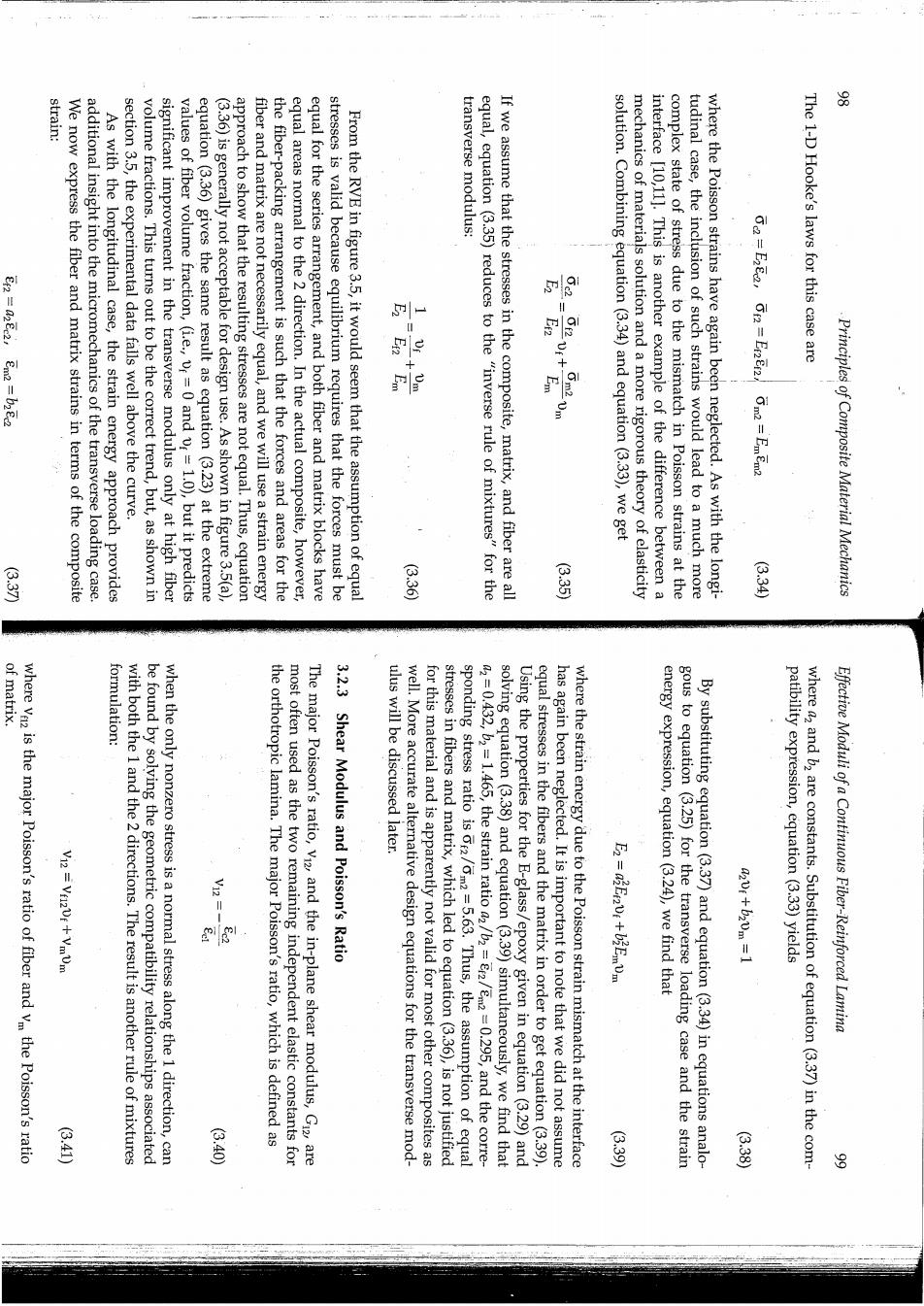正在加载图片...

strain: We now express the fiber and matrix strains in terms of the composite additional insight into the micromechanics of the transverse loading case. As with the longitudinal case,the strain energy approach provides section 3.5,the experimental data falls well above the curve. volume fractions.This turns out to be the correct trend,but,as shown in significant improvement in the transverse modulus only at high fiber values of fiber volume fraction,(i.e.,vr=0 and vr=1.0),but it predicts equation(3.36)gives the same result as equation (3.23)at the extreme (3.36)is generally not acceptable for design use.As shown in figure 3.5(a), approach to show that the resulting stresses are not equal.Thus,equation fiber and matrix are not necessarily equal,and we will use a strain energy the fiber-packing arrangement is such that the forces and areas for the equal areas normal to the 2 direction.In the actual composite,however, equal for the series arrangement,and both fiber and matrix blocks have stresses is valid because equilibrium requires that the forces must be From the RVE in figure 3.5,it would seem that the assumption of equal transverse modulus: equal,equation (3.35)reduces to the "inverse rule of mixtures"for the If we assume that the stresses in the composite,matrix,and fiber are all E2 solution.Combining equation(3.34)and equation (3.33),we get mechanics of materials solution and a more rigorous theory of elasticity interface [10,11].This is another example of the difference between a complex state of stress due to the mismatch in Poisson strains at the tudinal case,the inclusion of such strains would lead to a much more where the Poisson strains have again been neglected.As with the longi- The 1-D Hooke's laws for this case are u09 Principles of Composite Material Mechanics .3 2.36 3.35 of matrix. formulation: where va2 is the major Poisson's ratio of fiber and vm the Poisson's ratio V12 Vi12Uf+VmUm with both the 1 and the 2 directions.The result is another rule of mixtures be found by solying the geometric compatibility relationships associated when the only nonzero stress is a normal stress along the 1 direction,can the orthotropic lamina.The major Poisson's ratio,which is defined as most often used as the two remaining independent elastic constants for The major Poisson's ratio,vi2,and the in-plane shear modulus,Gi2,are 3.2.3 Shear Modulus and Poisson's Ratio ulus will be discussed later. well.More accurate alternative design equations for the transverse mod- for this material and is apparently not valid for most other composites as stresses in fibers and matrix,which led to equation(3.36),is not justified sponding stress ratio is 6r2/om2=5.63.Thus,the assumption of equal a2=0.432,b2=1.465,the strain ratio a/b2=Er2/Em2 =0.295,and the corre- solving equation(3.38)and equation(3.39)simultaneously,we find that Using the properties for the E-glass/epoxy given in equation(3.29)and equal stresses in the fibers and the matrix in order to get equation(3.39) has again been neglected.It is important to note that we did not assume where the strain energy due to the Poisson strain mismatch at the interface energy expression,equation(3.24),we find that gous to equation (3.25)for the transverse loading case and the strain By substituting equation(3.37)and equation(3.34)in equations analo- 21+70m-1 patibility expression,equation(3.33)yields where a2 and b2 are constants.Substitution of equation(3.37)in the com- Effective Moduli of a Continuous Fiber-Reinforced Lamina 3.元1) 239